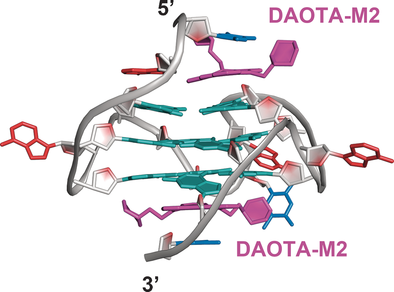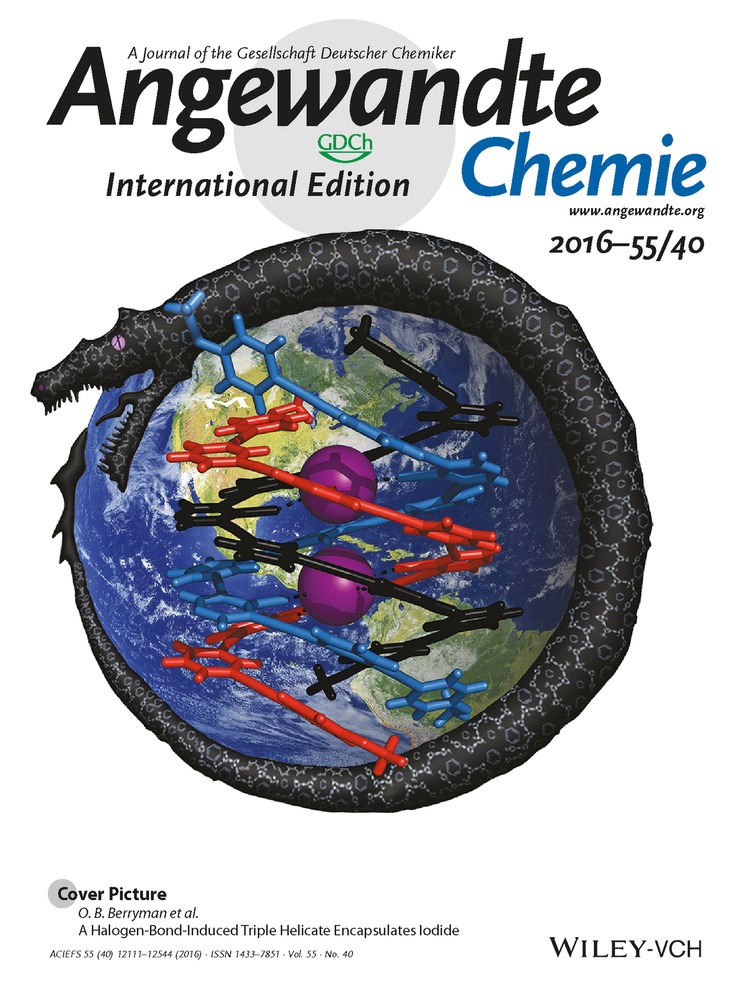NMR Structure of a Triangulenium-Based Long-Lived Fluorescence Probe Bound to a G-Quadruplex
Graphical Abstract
Playing the triangle in a quartet: A small-molecule optical probe (DAOTA-M2) based on a triangulenium core binds to G-quadruplexes in a 1:2 stoichiometry. Binding of DAOTA-M2 occurs mainly through π–π stacking between the triangulenium core and the guanine residues of the outer G-quartets. Interestingly, the binding affinities of DAOTA-M2 for the two outer G-quartets differ by a factor of two.
Abstract
An NMR structural study of the interaction between a small-molecule optical probe (DAOTA-M2) and a G-quadruplex from the promoter region of the c-myc oncogene revealed that they interact at 1:2 binding stoichiometry. NMR-restrained structural calculations show that binding of DAOTA-M2 occurs mainly through π–π stacking between the polyaromatic core of the ligand and guanine residues of the outer G-quartets. Interestingly, the binding affinities of DAOTA-M2 differ by a factor of two for the outer G-quartets of the unimolecular parallel G-quadruplex under study. Unrestrained MD calculations indicate that DAOTA-M2 displays significant dynamic behavior when stacked on a G-quartet plane. These studies provide molecular guidelines for the design of triangulenium derivatives that can be used as optical probes for G-quadruplexes.





